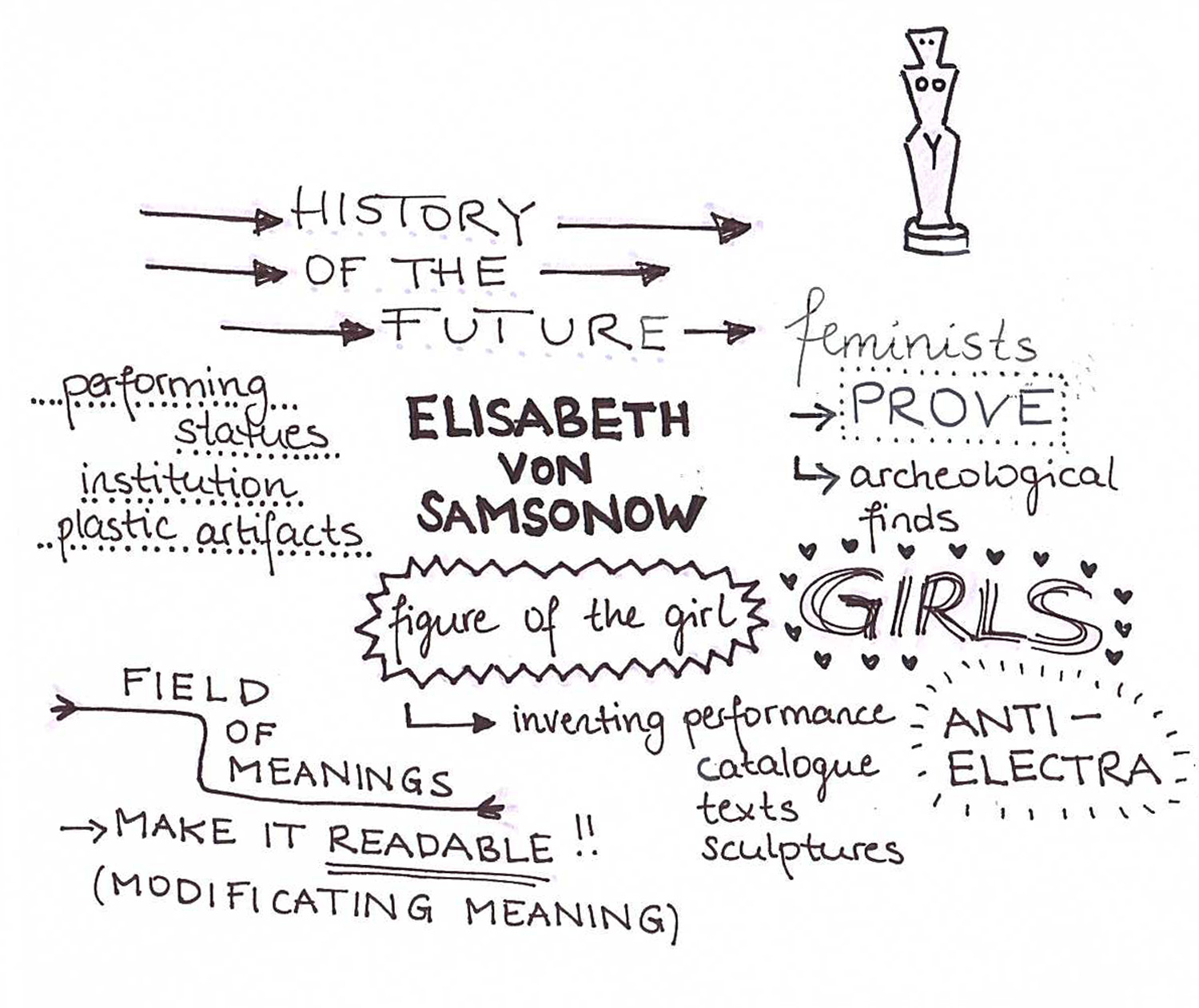
Prehistory by Feminism
The Appropriation of Prehistory by Feminism. Strategies in Feminist Writing of History During the 1970s and 1980s
Elisabeth von Samsonow
The invention of prehistory is present as a crucial question in contemporary debates and exhibition practices. The Haus der Kulturen Welt in Berlin dedicated a show to A Neolithic Childhood and the Centre Pompidou in Paris displayed the encounter zone between prehistory and art at the beginning of the twentieth century in 2019’s La Préhistoire, un Enigme, asking all the right questions. My research project deals with another substantial aspect of chronology so deeply challenged by prehistory, namely the appropriation of prehistory by feminist concepts of history in the 1970s and ’80s. Titles such as When God Was a Woman (Carol P. Christ), Ancient Mirrors of Womanhood (Merlin Stone), Our Heritage is Our Power (Judy Chicago), or Woman and Culture in Goddess-Oriented Old Europe (Marija Gimbutas) underscore the unquestioned evidence of a history implying female subjectivity as an agent. This female history in feminist history-making is projected in a precursor to history onto a remote space of time, when there was no patriarchy. With regard to the manifold tentatives of appropriation that use prehistory for different goals—primarily political, artistic, and scientific ones—this feminist appropriation, in my view, is one of the most significant projects. The opportunity for a feminist historicism that the return of a forgotten age provides also brought a literal return with it: the chance to make women’s affairs reemerge and become reestablished like this continent of time. My project investigates the conditions and prerequisites of a written feminist history as well as the concept of temporalities as well as the synchronicities and diachronicities with which archaeology infects the humanities, willingly or unwillingly.
